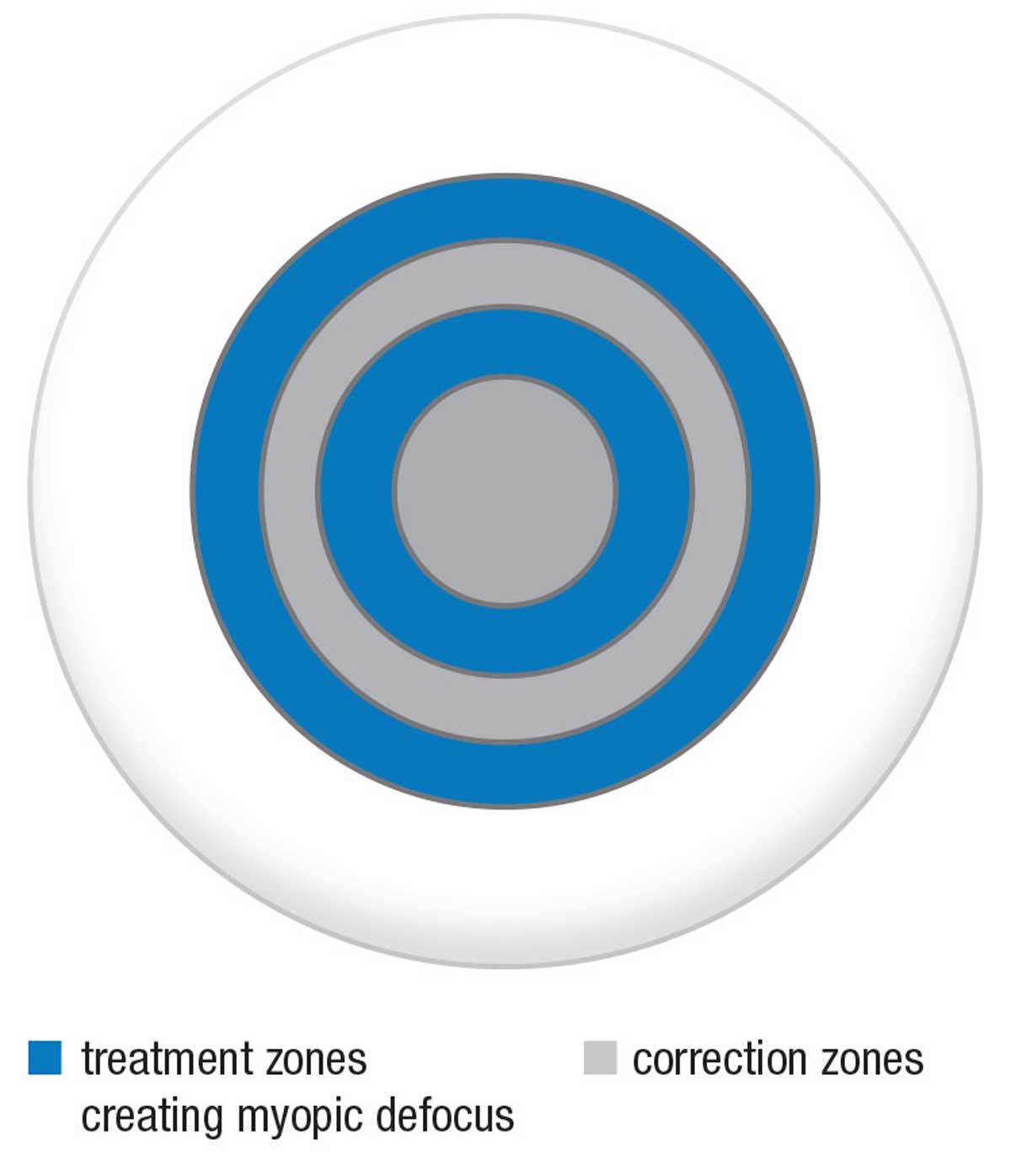 |
The MiSight lens by CooperVision is a dual-focus contact lens, an option which could help slow myopia progression. Adapted from CooperVision. Click image to enlarge. |
It’s no secret that myopia prevalence is rapidly increasing, with the condition often beginning in early childhood and continuing into adolescence. Many studies have investigated myopia and its progression, with a recent report evaluating the effectiveness of dual-focus contact lenses in sustaining slowed progression of juvenile-onset myopia over six years and assessing myopia progression in children who were switched to this modality at the end of the third year.
Part one was a three-year clinical trial comparing dual-focus contact lenses with control lenses (Proclear 1-day) in 52 patients. In part two, 56 children were treated with MiSight 1-day dual-focus contact lenses for an additional three years. Cycloplegic spherical equivalent refractive error and AL were monitored and linear mixed models were used to compare the adjusted changes annually.
There was little difference between myopia progression in parts one and two of the study, suggesting that the myopia control treatment with dual-focus contact lenses has a sustained slowed eye growth over time. Approximately one-third of the decreased progression observed during part two can be attributed to age, the study authors noted.
“During part two, the group new to MiSight 1-day experienced slightly slower progression, suggesting that treatment efficacy is not significantly affected by prior treatment,” they explained. “Also, this similar progression occurred despite generally higher myopia levels and longer eyes following an absence of treatment in part one.”
Within-eye comparisons of AL growth revealed a 71% slowing for the control group and a small subset of eyes (10%) that did not respond to treatment.
Average spherical equivalent refractive error progression of the control cohort was slowed by 0.98D in part two and AL growth was reduced by 0.46mm. This significant slowing was observed in 84% of the eyes newly treated with MiSight 1-day in part two who were older (13 to 15 years) than the children enrolled in part one (eight to 12 years). This shows there is treatment efficacy in children who were three years older than those recruited into the original treated cohort.
“In conclusion, this six-year data provides compelling evidence of an accumulating myopia control effect of a dual-focus contact lens as treatment duration is extended and beneficial effects, even when treatment is commenced at an older age,” the authors explained. “The data for the refit control cohort is consistent with the hypothesis that treatment effect is proportional to pre-treatment growth rates and thus larger for fast-growing eyes.”
Chamberlain P, Bradley A, Arumugam B, et al. Long-term effect of dual-focus contact lenses on myopia progression in children: a 6-year multicenter clinical trial. Optom Vis Sci. December 30, 2021. [Epub ahead of print]. |

